Top dressing raspberries in the spring for a big harvest
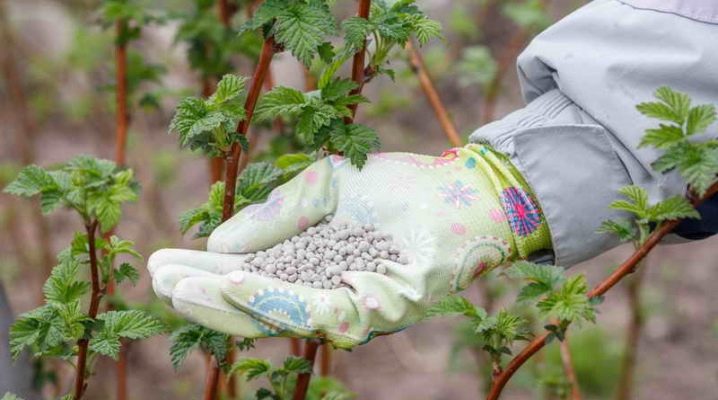
Raspberry is considered an unpretentious fruit crop. However, in order for it to grow quickly on the plantation and give a rich harvest, it needs periodic feeding during the growing season. Spring fertilization plays a special role, since it is at this time that the shrub is gaining strength for further growth, the formation of ovaries and fruiting.
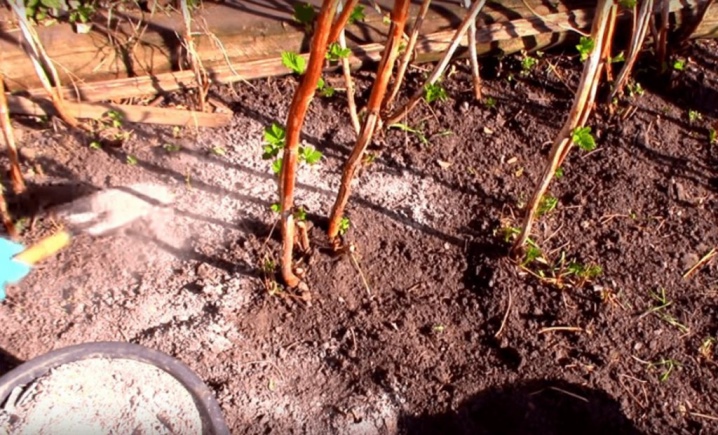
The need for feeding
Spring care plays an important role in the development of raspberries. With the arrival of a warm time, sap flow begins in fruit shrubs, vegetative parts - the root system and shoots - actively grow. This is important for the culture, since it is through them that the berry bush is nourished and metabolic processes are carried out.
At this stage, the plant needs nutrients. They strengthen the plant's immunity, increase resistance to fungal infections and attacks of garden pests. Many flowers are formed on strong, long shoots, with sufficient nutrition, large and sweet berries will grow from them.
Raspberries are very demanding on the composition of the soil. The plant reacts poorly to the lack of certain nutrients.
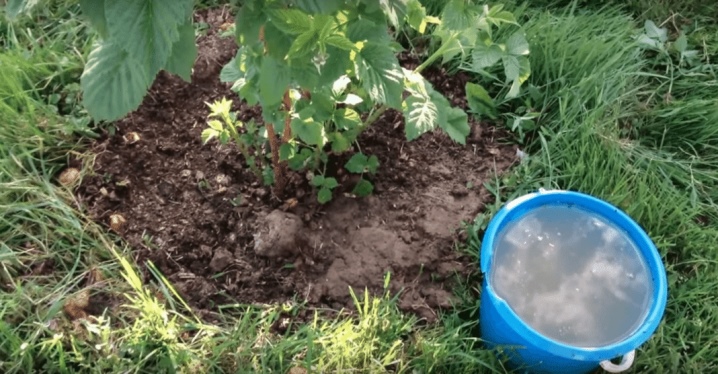
This berry shrub requires nitrogen as well as phosphorus and potassium for healthy growth and development. Raspberries have a great need for magnesium, calcium, sulfur, iron, boron and some other elements.
Top dressing in the summer months helps to improve the quality of fruits - their size and taste. Fertilizing in the fall prepares the shrub for hibernation and frost. Throughout the growing season, foliar dressings are allowed, they create effective protection. To protect the raspberry tree from aphids and volunteers, experienced gardeners make periodic treatments with biological, chemical and folk compounds.
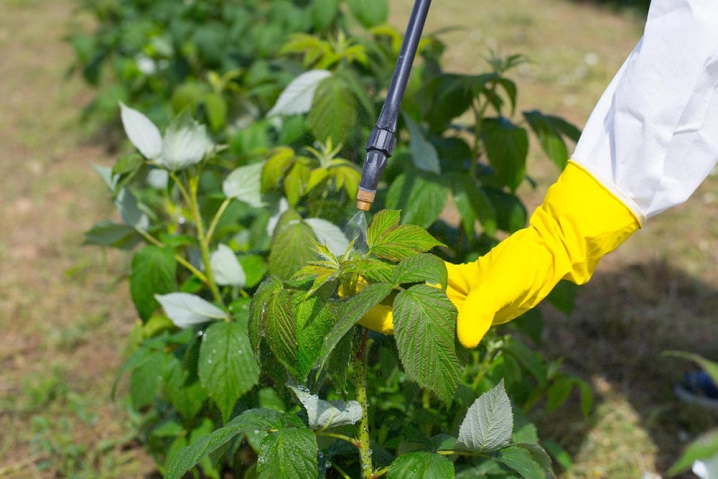
What can you feed?
For the full development of raspberry bushes, mineral and organic fertilizers are required. When it comes to mineral dressing, nitrogen is considered the most important element. It promotes active growth of green mass, strengthens the plant and creates an effective defense against fungal diseases.
Nitrogen compounds are usually applied before the beginning of the fruiting period. If you add them in late summer or autumn, this will significantly reduce the frost resistance of raspberry plantations.
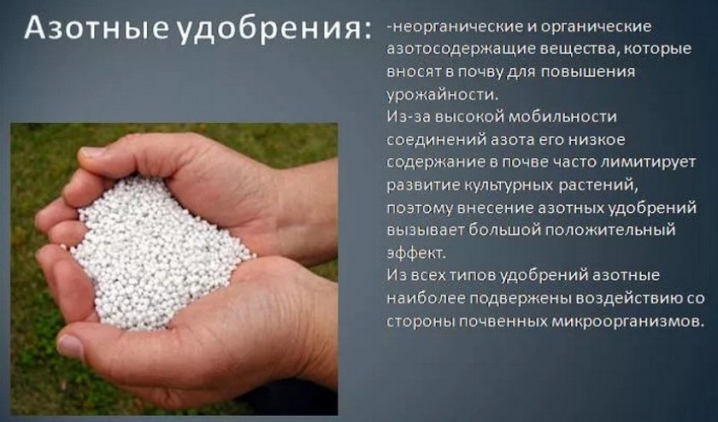
The following drugs act as sources of nitrogen.
- Urea (urea) - it is used to prepare a solution at the rate of 30 g of funds per bucket of water, they spill a site near the bush. On loose substrates, you can use dry matter, in this case, 1 sq. m you need 20 g of granules.
- Ammonium nitrate - this tool is used only for root dressing. It is introduced into the substrate in a proportion of 10 g per square meter.
- Ammonia - 1 tbsp. l. the funds are diluted in 1 liter of cool water and root and foliar dressings are carried out.

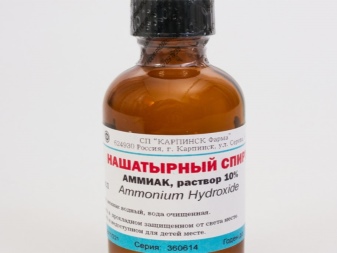
On depleted lands or with difficulties with growing and yielding in previous seasons, in late spring - early summer, a complex of fertilizers should be applied to the ground:
- ammonium nitrate - 25-30 g;
- potassium sulfate - 50 g;
- superphosphate - 50 g.
The proportion is indicated per 1 sq. m.
Important: Fertilizers should be applied to moistened soil. If the substrate is dry, thorough watering should be done before and after fertilization.

Vitamin and mineral complexes are very popular among gardeners. They contain the full range of micro and macro elements important for maintaining the health of raspberry bushes. The most effective composition is "Zdraven Turbo", it can be used for both root and foliar treatments. The product is available in liquid form.
The composition includes phosphorus, nitrogen, potassium, as well as cobalt, manganese and zinc. The main advantage of the drug is the absence of chlorine, which has a detrimental effect on the immunity of the raspberry culture. The nutrient solution is made up at the rate of 20 g of the substance per bucket of water. For one square meter of the plantation, 8-10 liters are applied. For spraying, 10 g of the drug is dissolved in a bucket of water.

The ready-made mineral composition "Gumi-Omi" gives a good effect. It contains copper, boron, phosphorus, nitrogen, some organic components, as well as sodium humates. The granules are diluted in cool water in accordance with the instructions and the raspberries are spilled with the ready-made solution twice in the spring.
The preparations "Gumat + 7 Iodine", "Krepysh" have become widespread among domestic gardeners. the composition "Berry bushes" gives a good effect.
The raspberry crop responds gratefully to organic fertilizers. Organic waste is understood as animal and bird waste, as well as composted plant residues. Components of natural origin do not accumulate in plant cells and do not have a negative effect on them. However, organic matter is quite aggressive, so you need to use it in dosage. Otherwise, it can damage the roots of the bushes.
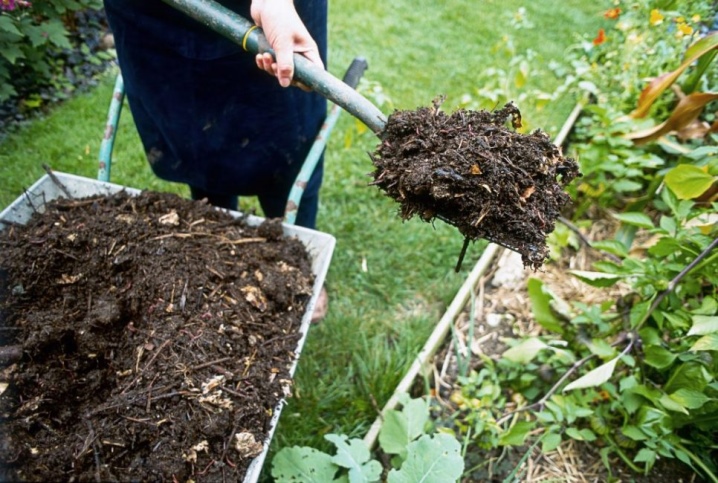
Among organic compounds, the most common are such.
- Infusions of fresh herbs. The green part of the meadow plants is thoroughly crushed, then poured with cold water and placed in a sunny place for 5-7 days for fermentation. This composition is diluted with warm water at a concentration of 1 to 6 and used for spilling raspberries. Processing is carried out at the flowering stage, since herbs are a source of potassium, which the plant needs during this period.
- Manure. Usually horse or cow manure is used, which is certainly rotted, since the fresh substance is too aggressive. Root feeding is carried out at the rate of 4-5 kg / sq. m. You can add it dry or dissolved. In the latter case, the specified amount of manure is diluted in 10 liters of water, put on fermentation for a week, then water is added at the rate of 1 to 5 and the soil is cultivated in the near-stem circle.
- Chicken droppings. It is a very effective fertilizer. But it is oversaturated with minerals, therefore it is quite aggressive for the bushes. It is insisted according to the same scheme as manure, but the concentration is reduced by 5 times.
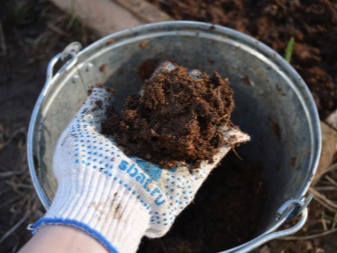
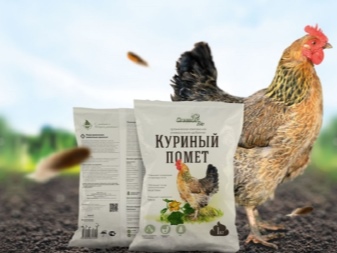
Folk remedies are highly effective. Here are just a few of the most popular fertilizers. The peel of 10 bananas is infused in a bucket of water, after which the soil is cultivated around the raspberry bushes. The resulting infusion is an invaluable source of potassium.
A package of dry yeast is mixed with half a glass of sugar, diluted in 10 liters of cool water and infused for 2-4 hours. After that, it is again diluted with water in a ratio of 1 to 5 and used for watering the land on a raspberry plantation.
When using compressed yeast, you will need much more of them - 500 g per bucket of water.
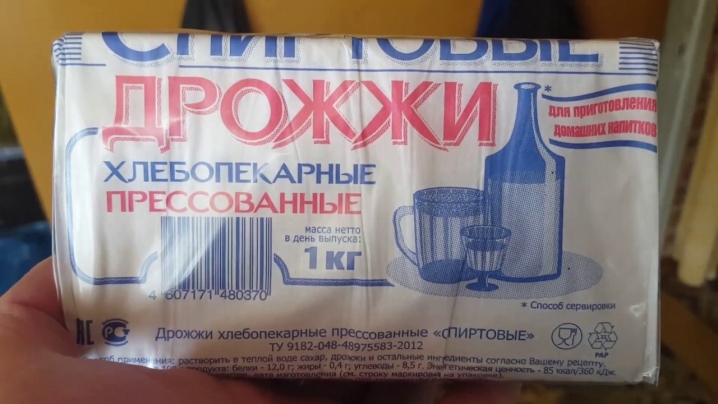
50 g of onion husks are infused in 80 liters of water for 10-14 days. This infusion feeds the raspberry crop, and, in addition, has pronounced insecticidal characteristics. Such a composition not only nourishes, but also protects the culture from pathogenic organisms.
An infusion of nettle with comfrey gives a good result. For its preparation, take 500 g of raw grass, pour in a bucket of cool water and leave to ferment in a warm place for a couple of weeks, stirring occasionally. Before processing, the composition is filtered and diluted with water at the rate of 1 to 5.
From time to time, raspberry bushes need to be fed with ash. Its composition contains many substances useful for this culture, while there is no nitrogen among them.
This composition is optimal as a power source in summer or autumn. In the spring months, ash can only be used as an additional component.

Ash treatments improve the immunity of the plant, allow it to resist fungal infections in the soil. Ash fights the vast majority of insect pests. In addition, it deacidifies the soil, which fully meets the needs of the raspberry crop.
Only freshly obtained ash or that which was stored in a dry environment is suitable for processing. Any interaction with moisture causes the removal of nutrients from the composition. To compose a useful top dressing, 250 g of crushed ash is dissolved in 7 liters of water, stirred well and immediately watered with a raspberry bush. This volume is enough to process 1 sq. m landings.
Important: Do not use ash immediately after the introduction of nitrogen-containing compounds, as well as with them. It is also not recommended to mix it with organic matter.
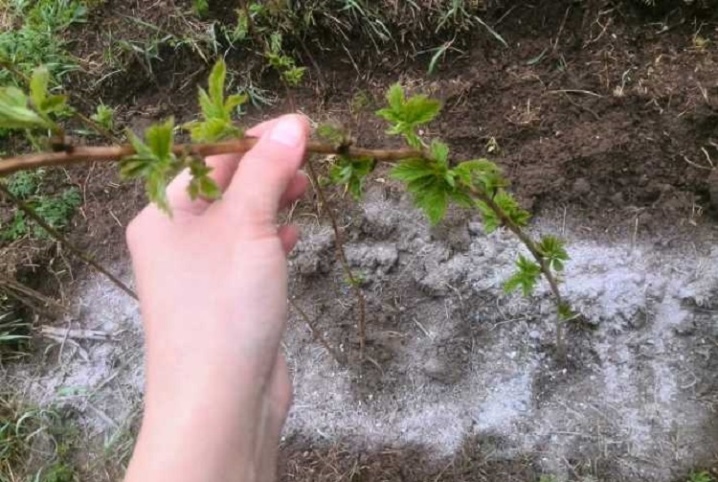
In this case, reactions are triggered that make feeding ineffective. Ash nutrition is allowed to be introduced no earlier than 10-15 days after the soil is enriched with nitrogen.
Special attention should be paid to foliar feeding. They penetrate the tissues through the leaves, therefore, provide fast nutrition for fruit bushes. However, only these treatments are not enough for the plant, so they should be alternated with root treatments. This approach will provide the most complete fertilization of the crop.
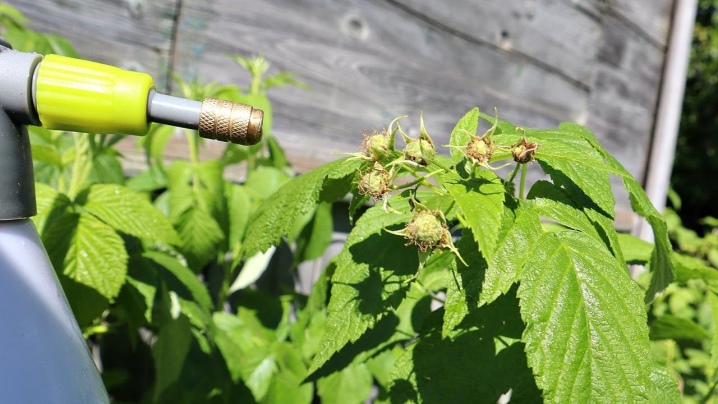
The need for foliage processing arises in the following cases.
- In case of untimely introduction of root feeding, when the plant stops in development.
- If at the moment when the raspberries require root fertilizers, the substrate under the bushes is excessively moist, then it is worth feeding on the leaves.
- In cases of root injury - mechanical damage or the activity of insects.
- With a problematic substrate. For example, in acidified soils, some elements of nutrient compositions are transformed into compounds that are poorly absorbed by the berry culture. And on loamy and clayey soils, the liquid cannot reach the roots at all.
- For the treatment of the plantation, an infusion of fresh grass is optimal, diluted with water at the rate of 1 to 5. It is insisted for about a week in a sunny place, filtered and sprayed. Alternatively, you can take urea - in this case, 1 tbsp. l. the funds are diluted in 8-10 liters of water.
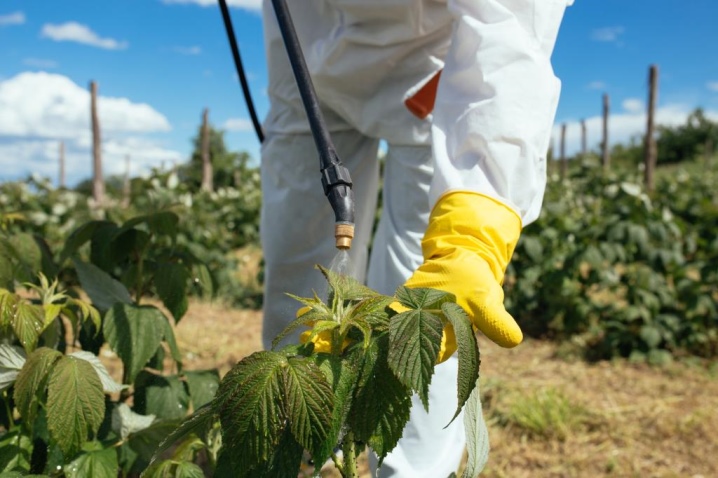
Main steps
Any processing of fruit and berry crops should be carried out in the time allotted for this. The effectiveness of the manipulations largely depends on this. There are several main stages of feeding raspberry bushes, they depend on the phase of development of the raspberry culture.
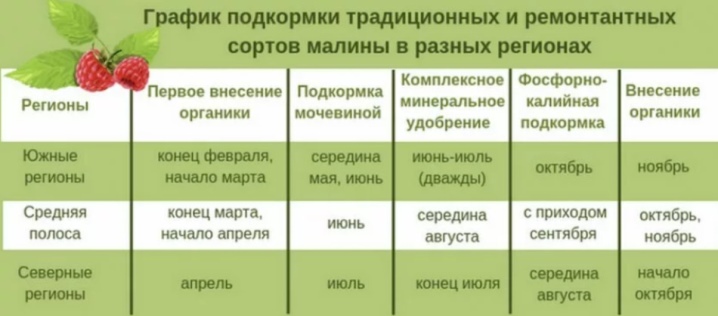
When snow melts
The first feeding is carried out in early spring immediately after winter, as soon as the temperature is set at 4-5 degrees.
You can also fertilize raspberries in April - at the early stage of the growing season, when the movement of juices is activated and the buds begin to swell.
During this period, it is important for the culture to increase the leaf mass, therefore it should be fed with nitrogen-containing compounds (ammonium nitrate and urea or organic matter). The greatest effect is given by complex compounds that include nitrogen together with phosphorus and potassium - for example, nitroammofosk.
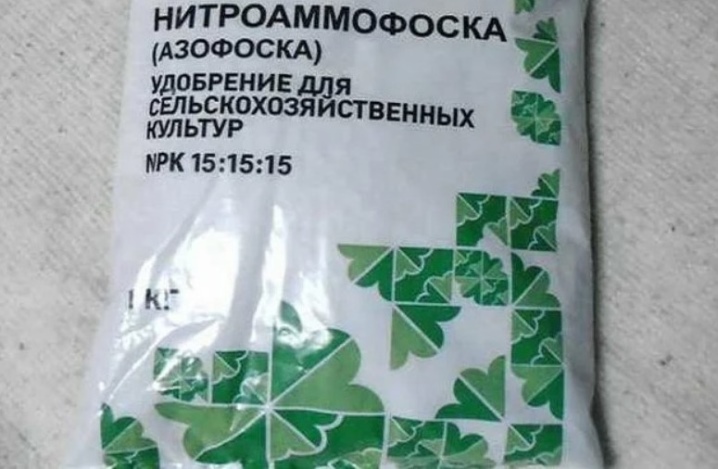
Before flowering
The next top dressing is done at the budding stage before flowering. The formulations introduced at this point produce large, sweet and juicy berries. At this stage, the plant requires potassium and phosphorus, the optimal solution will be the complex composition of "Diammofosk".
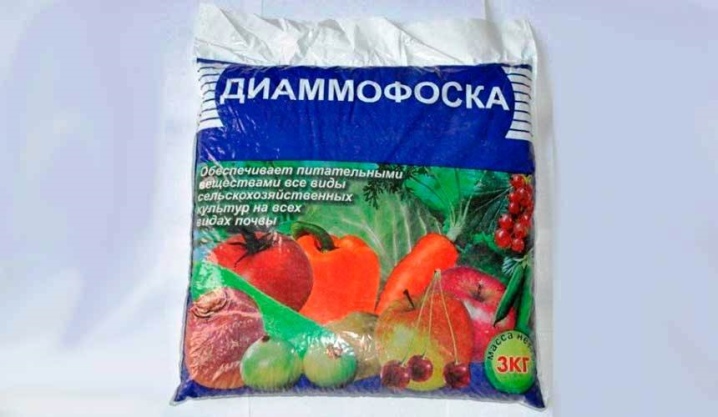
During flowering
The third feeding is performed at the time of flowering or at the very beginning of fruit formation. At this stage, the raspberries should be fertilized with phosphorus and potassium.With timely application of top dressing, gardeners can count on a rich harvest of large and sweet berries.
Organic solutions are optimal these days.
- Manure - the solution is prepared from a ratio of 1 to 50.
- Bird droppings - first, a concentrate is prepared at the rate of 1 to 10. Then, 1 liter of the resulting composition is diluted in a bucket of cool water and the shrubs are thoroughly shed.
- Yeast - 10 g of dry preparation is diluted in 10 liters of water.

After harvest
After the end of the fruiting period, the last feeding is done.
Useful components at this moment are required so that the bushes can form buds for the formation of fruits in the next season and strengthen their immunity before prolonged winter frosts.
A good effect at this moment is given by a phosphorus composition with a slight addition of potassium. It is best to use superphosphate or potassium sulfate.

Common mistakes
The most common mistakes include the following.
- Untimely fertilization. Any type of dressing corresponds to a certain stage of plant development. If you feed it earlier or later than the recommended time, then raspberries will not be able to properly use the received nutritional components.
- Overdose or lack of fertilizer. An excess of fertilizing is as dangerous as a deficiency. For example, an excessive amount of nitrogen causes an active build-up of leaf mass. This negatively affects the formation and growth of berries.
- Violation of technology. Nutrient mixtures under the raspberry tree should be applied evenly so that all bushes receive the necessary proportion of nutrients.
- Use of poor quality dressings. Expired fertilizers cannot be used to treat plants. In an attempt to save money, you will cause serious damage to the bushes, up to their death.
- Application of fertilizers with an increased concentration of chlorine. Chlorine refers to trace elements that the raspberry culture does not perceive. With its excessive concentration, the bush becomes ill with chlorosis, the first symptom is yellowing of the leaves.
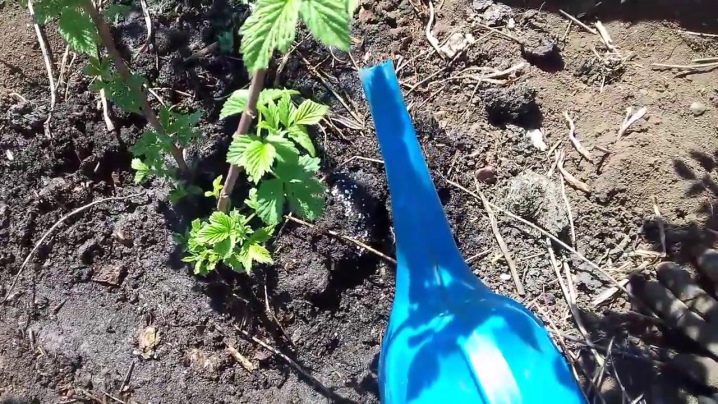
Useful Tips
In conclusion, we will give some useful recommendations that will allow you to get a rich harvest of delicious ripe berries.
If fertilizers were introduced into the planting hole when planting a raspberry bush, then in the next couple of years it will not need additional feeding.
Before adding any nutrient mixtures, the soil should be shed around the plants no earlier than two hours before treatment. Only then can fertilization be given. If you neglect this rule, the roots will receive a severe burn, and the bush will wither.
When carrying out root dressings, care must be taken that liquid solutions do not fall on the stems and leaves. If this happens, rinse the damaged area with clean water as soon as possible.
Feeding is best done in the evening or in the morning before sunrise. It is not recommended to carry out this procedure at noon hours.
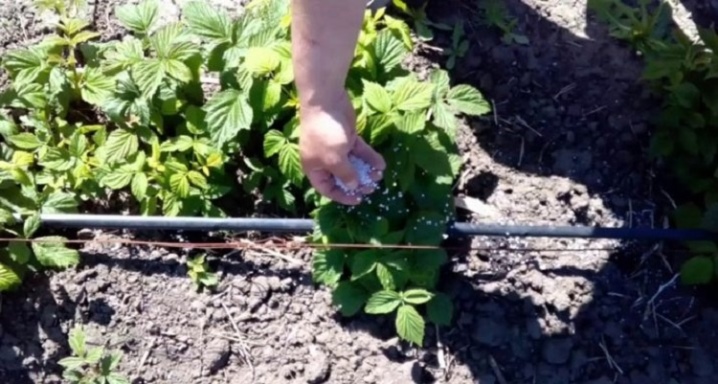







The comment was sent successfully.